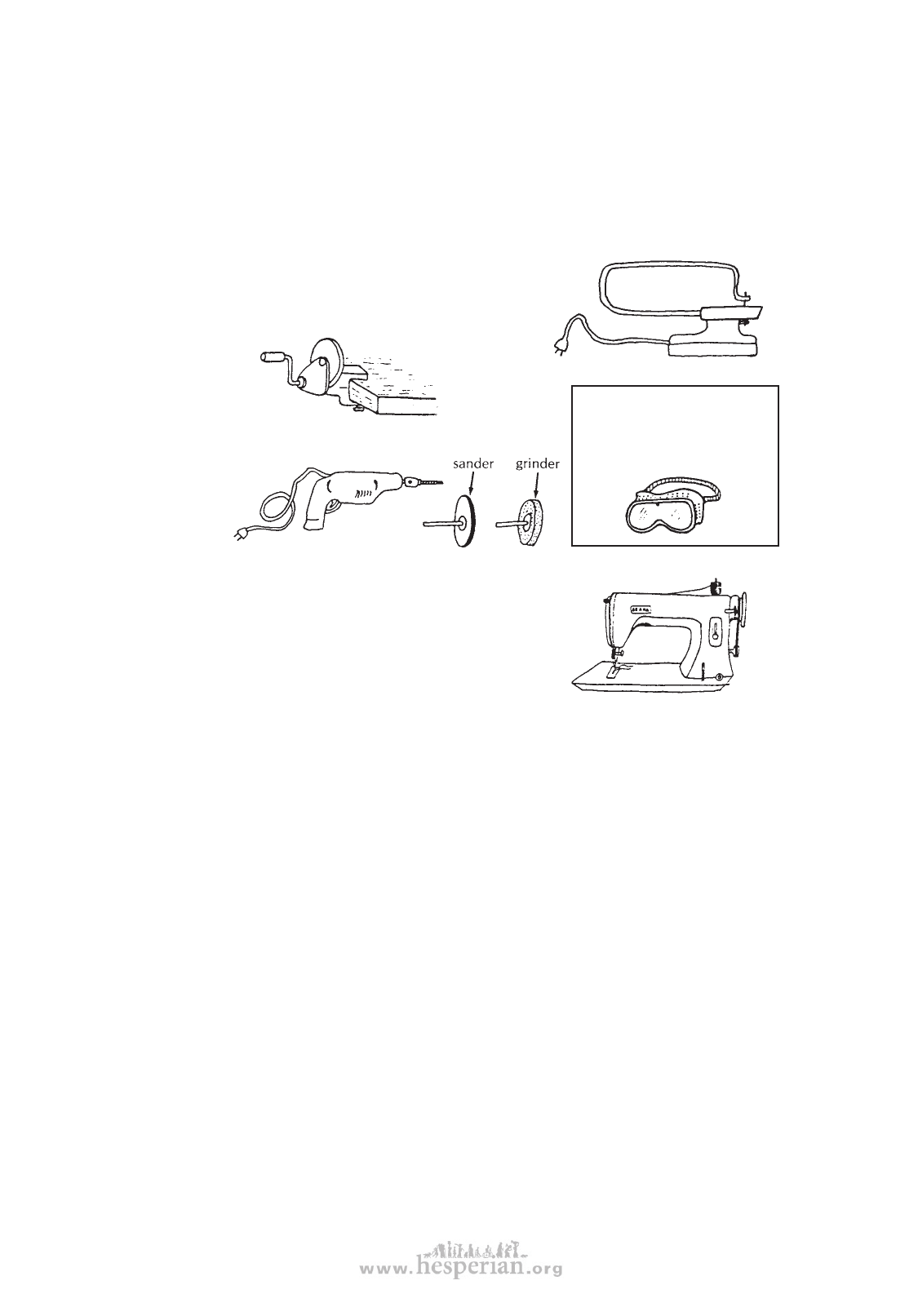
466 chapter 49
More expensive tools
If electricity is available and the program or community can afford it, a few power
tools will make work faster, more fun, and more productive for the children. Clearly,
care must be taken to avoid highly dangerous equipment. Make sure children take
the necessary precautions. Here are some examples of electrical equipment that can
make work much easier and faster:
• an electric jigsaw for making puzzles, wood animals,
and so on
• grinding wheel
(hand or electric)
• an electric drill
with attachments
for sanding and
grinding
CAUTION: Be sure children
and all workers use goggles
(protective glasses) when
using tools where bits of wood
or metal could injure eyes.
• A sewing machine (foot-powered or electric) will also
be helpful in making many toys, dolls, and clothing. If the
program can afford it, this machine can speed up sewing
greatly, and help children learn an important skill.
Gathering materials and supplies
Explore every opportunity to obtain low- or no-cost materials and supplies for making
toys. Here are a few possibilities:
• Many materials for making toys can be gathered from local forests—branches of
trees, reeds, bamboo, wild kapok (cotton). Also various nuts, seedpods, and sea-
shells can be used.
• Broken fruit-packing boxes often have thin wood that is excellent for toy-making.
Even the nails can be pulled out, straightened and re-used.
• Old tubes of car and bike tires provide elastic bands for many toys.
• Scraps of wood, wire, and other supplies left over by lumber stores, builders, etc.
will often be donated if you explain why you want them.
• Clothing makers and factories may have scraps of cloth left over.
• Cardboard cartons, especially thick ones (even if broken) provide material for making many
toys. Ask in local shops.
• Old cans, tins, plastic bottles, thread spools, and so on are also useful.
Ask members of the community to look for and collect these and other supplies.
Disabled village Children